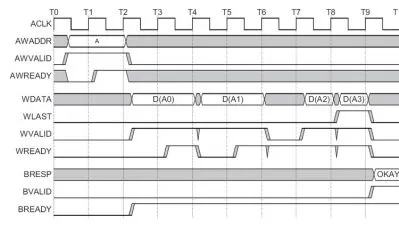Logic Design using Verilog | New Approach!
Mohammed Adil
5:00:52
Description
Advance Digital Design using verilog.
What You'll Learn?
- Understand the principles of digital design and how to apply them to the design of digital circuits and systems.
- Be able to use Verilog to design and simulate a variety of digital circuits, including combinational logic circuits, sequential logic circuits, and state machin
- Understand logic design concepts and apply it using verilog.
- Have the skills and knowledge necessary to design and implement complex digital systems for a variety of applications.
Who is this for?
What You Need to Know?
More details
DescriptionEmbark on a journey into the intricacies of digital design with a focus on advanced techniques using Verilog. This course delves into the realm of vectorized components, including adders, multiplexers, comparators, and D flip-flops, providing a comprehensive understanding of their applications and implementations.
Key Topics:
Vectorized Adders: Explore advanced methods of designing adders using vectors, enabling efficient and optimized digital circuitry.
Vectorized Multiplexers: Learn to create versatile and space-efficient circuits using vectored multiplexers, optimizing resource utilization in digital systems.
Vectorized Comparators: Understand the nuances of designing vectored comparators for precise digital signal processing and decision-making.
Vectorized D Flip-Flops (DFF): Delve into the world of sequential logic by mastering the design and application of vectored D flip-flops, crucial for building memory elements in digital systems.
Circuit Design Approach: Adopt a unique methodology by first conceptualizing and sketching digital circuits on paper. Translate these designs into efficient Verilog code to validate and simulate their behavior.
Course Highlights:
Hands-On Design Exercises: Engage in practical design exercises that involve drawing digital circuits on paper before implementing them in Verilog, reinforcing a strong connection between theory and application.
Real-world Applications: Explore real-world applications of vectorized components, emphasizing their role in cutting-edge digital systems, from signal processing to data storage.
Project-Based Learning: Undertake a comprehensive final project that integrates the principles learned throughout the course. This project encourages creativity and problem-solving skills, applying vectorized design techniques to address complex digital challenges.
Prerequisites:
Basic understanding of digital design fundamentals and Boolean algebra.
Familiarity with Verilog programming language basics.
Who Should Enroll:
Electrical and Computer Engineering students seeking an in-depth understanding of advanced digital design.
Professionals in the field of digital system design aiming to enhance their skillset with cutting-edge techniques.
Outcome:
Upon completion of this course, participants will possess the skills to design complex digital circuits using advanced vectorized components, gaining a competitive edge in the ever-evolving field of digital system design. The ability to seamlessly transition from paper sketches to Verilog code ensures a practical and comprehensive understanding of the design process. Enroll now to elevate your expertise in advanced digital design with Verilog.
Who this course is for:
- This course on logic design using Verilog is likely to be most suitable for students who have a basic foundation in digital design and are looking to learn how to design and implement digital circuits using the Verilog hardware description language. It may also be suitable for students who are interested in a career in hardware design or who want to expand their skills and knowledge in digital design.
Embark on a journey into the intricacies of digital design with a focus on advanced techniques using Verilog. This course delves into the realm of vectorized components, including adders, multiplexers, comparators, and D flip-flops, providing a comprehensive understanding of their applications and implementations.
Key Topics:
Vectorized Adders: Explore advanced methods of designing adders using vectors, enabling efficient and optimized digital circuitry.
Vectorized Multiplexers: Learn to create versatile and space-efficient circuits using vectored multiplexers, optimizing resource utilization in digital systems.
Vectorized Comparators: Understand the nuances of designing vectored comparators for precise digital signal processing and decision-making.
Vectorized D Flip-Flops (DFF): Delve into the world of sequential logic by mastering the design and application of vectored D flip-flops, crucial for building memory elements in digital systems.
Circuit Design Approach: Adopt a unique methodology by first conceptualizing and sketching digital circuits on paper. Translate these designs into efficient Verilog code to validate and simulate their behavior.
Course Highlights:
Hands-On Design Exercises: Engage in practical design exercises that involve drawing digital circuits on paper before implementing them in Verilog, reinforcing a strong connection between theory and application.
Real-world Applications: Explore real-world applications of vectorized components, emphasizing their role in cutting-edge digital systems, from signal processing to data storage.
Project-Based Learning: Undertake a comprehensive final project that integrates the principles learned throughout the course. This project encourages creativity and problem-solving skills, applying vectorized design techniques to address complex digital challenges.
Prerequisites:
Basic understanding of digital design fundamentals and Boolean algebra.
Familiarity with Verilog programming language basics.
Who Should Enroll:
Electrical and Computer Engineering students seeking an in-depth understanding of advanced digital design.
Professionals in the field of digital system design aiming to enhance their skillset with cutting-edge techniques.
Outcome:
Upon completion of this course, participants will possess the skills to design complex digital circuits using advanced vectorized components, gaining a competitive edge in the ever-evolving field of digital system design. The ability to seamlessly transition from paper sketches to Verilog code ensures a practical and comprehensive understanding of the design process. Enroll now to elevate your expertise in advanced digital design with Verilog.
Who this course is for:
- This course on logic design using Verilog is likely to be most suitable for students who have a basic foundation in digital design and are looking to learn how to design and implement digital circuits using the Verilog hardware description language. It may also be suitable for students who are interested in a career in hardware design or who want to expand their skills and knowledge in digital design.
User Reviews
Rating
Mohammed Adil
Instructor's Courses
Udemy
View courses Udemy- language english
- Training sessions 44
- duration 5:00:52
- Release Date 2024/01/05











